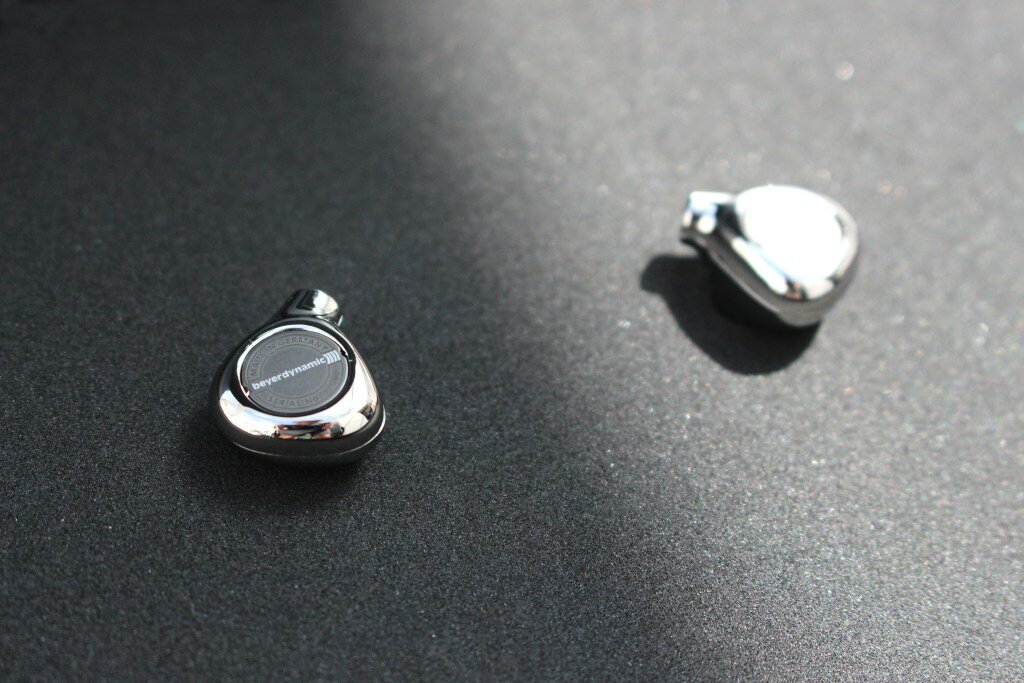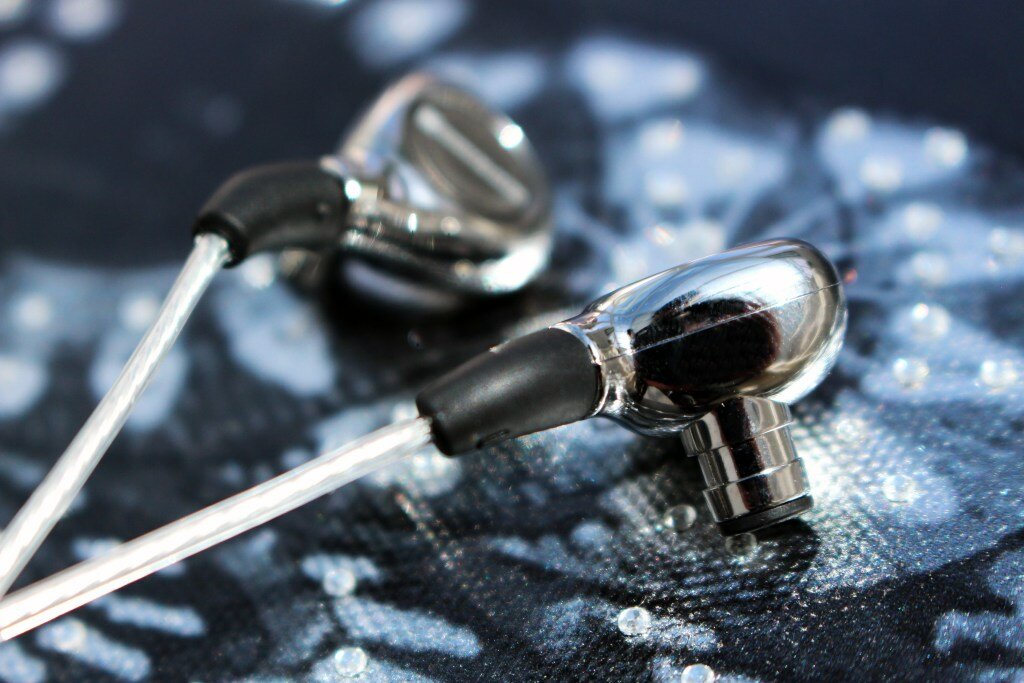Headquartered in Heilbronn, Germany – Beyerdynamic are a world-class audio brand founded in the era of the ‘roaring 20s’. With a penchant for audio systems, Beyerdynamic launched the first ever pair of dynamic headphones for home use in the years preceding the 2nd World War. Since then, they have launched subsidiaries worldwide with a workforce of over 400 employees. One of their defining innovations has centered around ‘tesla technology’ where the use of stronger permanent magnets allow for a faster and more responsive diaphragm driver.
With this focus, Beyerdynamic has been able to translate higher magnetic flux densities in more portable offerings such as the Beyerdynamic Xelento In-Ear Monitor which comes in both ‘Wireless’ and ‘Remote Wired’ editions. The focus of this review will be on the Beyerdynamic Xelento Wireless which uses a miniaturized version of the Tesla driver used in their flagship headphones.
While the Xelento Wireless is not a ‘True Wireless’ model, it uses a Bluetooth cable with an aluminum battery case to achieve independence from the headphone jack. At price of $1099 or € 1200 (inc. tax), the Beyerdynamic Xelento Wireless represents a sizeable purchase for those wishing for high-end sound on the move.

The Packaging
The Beyerdynamic Xelento packaging is very crisp and exacting with a clean white sleeve that slides away to reveal an inner latch box. This houses the two in-ear monitors themselves which are presented in a similar fashion to a jewellery piece. Beneath, Beyerdynamic have compartmentalized the accessory pieces into each of their own sections.
Users get a wired cable with an inline mic and playback controls as well as the Bluetooth cable for ‘wireless’ functionalities. There are 7 pairs of silicone eartips (sizes XS to 3XL) and 3 pairs of Comply foam eartips (S, M and L).
Users also receive a clip for battery pack and cable clip along with a pair of spare protective grills (an unusual but quite useful accessory piece). Finally, there is a luxurious leather carrying case which houses a USB-A to Micro USB cable). For those wondering where to charge the device, the aluminum casing from the Bluetooth cable slides out to reveal a micro-USB slot.
Overall, Beyerdynamic have supplied a generous abundance of accessories which will no doubt be more than enough for the average consumer’s needs.

The Build & Design
The Beyerdynamic Xelento is characterized by outstanding craftsmanship with its elegant aesthetic and carefully built aluminum chassis. The faceplate is of exacting standards with the delicately engraved Beyerdynamic logos and ‘Made in Germany’ signature. Presented as an ‘audible piece of jewellery’, the Xelento Wireless has the hallmarks of high-quality jewellers and watchmaker workmanship. Together, with the reflective chrome finish and CNC-milled aluminum, the Xelento does stand out as one of the finest built IEMs we have reviewed to date.
The Bluetooth cable is made from high-purity, silver plated conductors in a transparent sleeve and is connected to a rechargeable battery pack via in inline remote. The remote contains a multifunctional center button either side volume keys. Compared to the Bluetooth cable used for the Westone W80 V2, the Xelento’s is more refined with the use of aluminum for the slim cylindrical battery pack.

The Technology
The Beyerdynamic Xelento uses miniaturized Tesla Technology seen in their full-sized headphones. Named after Nicola Tesla (the pioneer of alternating current), the technology utilizes magnetic fields concentrated in a small air gap to achieve higher efficiencies from drivers. Since less voice coils need to be used owing to higher magnetic flux density, the diaphragm can accelerate and change directions faster. As a result, the driver is more responsive than conventional dynamic drivers.
For the wireless component, the Xelento Wireless adopts the use of Bluetooth 4.2 with capabilities to support aptX-HD. While there is no LDAC or the latest Bluetooth chipset, Beyerdynamic claim a superior sound with its current codecs and driver implementation.
Beyerdynamic have included an innovative MIY App which is compatible with the Beyerdynamic Xelento Wireless. With the app, users are able to customize the headphone sound according to own individual hearing thanks to MOSAYC (attention to detail) dynamic sound compensation.

Comfort & Isolation
Owing to the relatively small housings of the Xelento, the monitors are low-profile with high levels of comfort. One thing worth mentioning is that the battery case does a tendency to ‘pull/drag’ the monitors down with its weight. However, this can be easily mitigated with the included shirt clip. Since the monitors are worn ‘over-the-ear’ style, it is important that the shirt clip is worn at a level so as to not too cause too much slack which can easily offset the cables from off the ear.
Isolation levels are merely average – the Xelento Wireless does not include active noise cancelling technology and relies on passive noise isolation to reduce ambient noise.

Tonality
The Beyerdynamic Xelento prides itself on a rich sub-bass focus with a superimposed upper midrange/treble uptick. As a result, the sound signature veers towards V-shaped and balances well between articulacy and musicality.
Bass
I must admit I was surprised with the bass to boot from these small monitors. This is certainly north of the Harman Target with plenty of sub-bass extension and low-end ‘kick’. The Xelentos are quite seal-dependent and thus it is vital to achieve a proper seal with the the monitors resting flush against the conchae of the ear to achieve the most optimal bass response.
The foam tips offer the perfect compromise of extension and control where the lower frequencies are concerned. Taking these adjustments into consideration, the Xelentos really takes no prisoners with its full, impactful and authoritative bass.
Unlike the 64 Audio Nio, with its slower decay – the Xelento approaches the bass with both power and disciplined decay. In ‘All We Do’ by Kaytranada, the Xelento Wireless is able to dig impressively low with a texture that is both musical and engaging.
Midrange
The Xelento’s lower mids are subdued next to the underlying bass – allowing the frequencies to stay slightly back from the focus. Owing to the dip, lower octave male vocals do not have as much as prominence compared to more neutral or even mid-centric offerings. Though, the tuning towards a V-shaped signature does introduce some contrast which certainly adds an engaging layer to modern tracks and those with a rich sub-bass focus.
Tonally, there is some warmth lent from the lower frequencies across the midrange. Even though the mids are slightly thicker here, there is still a good amount of separation and layering. The upper midrange does have more prominence compared to the lower midrange which introduces some energy and attack in the higher frequencies.
Treble
Beyerdynamic have tuned the treble so that users are able to get some lower treble emphasis without artificial glare or extension from frequencies beyond. There is no 4K uptick and as a result, the Xelentos do not suffer from sibilance or grating tones. Overall, the treble quality is smooth and retains a nice flair of detail, speed and articulacy to keep tracks engaging.

Soundstage & Imaging
The Xelento wireless does not offer the largest soundstage dimensions in either the elements of width or depth. However, Beyerdynamic have done well with the amount of separation and layering within the soundscape to achieve a heightened sense of space and scale. This is particularly impressive with the strong sub-bass focus which has a tendency towards congestion (in less optimally tuned in-ear monitors). The smartly tuned upper midrange and treble also evokes some headroom and air for a more open staging.
Comparisons
Westone W80 V2 ($1499)
Like the Beyerdynamic Xelento Wireless, the Westone W80 V2 also includes an MMCX Bluetooth cable to allow wireless hi-fidelity listening. However, the similarities end here as the Westone W80 V2 employs eight balanced armature drivers whereas the Beyerdynamic Xelento uses single dynamic drivers (with Tesla technology).
Tonally, the Xelento is the more engaging in-ear monitor with its deep and extensive bass whereas the W80 V2 tempers towards the lighter BA-type bass. Of the two, the Westone W80 V2 adopts a safer tuning with its pleasant warm-of-neutral sound.
The Xelento Wireless, however, employs more contrast with its extensive bass and upper midrange edging towards a more musical signature.
Audeze Euclid ($1299)
The recently introduced Audeze Euclid incorporates a planar magnetic driver whereas the Beyerdynamic Xelento’s uses a dynamic driver. Comparing the two, the Xelento packs in more slam and authority at the low-end while the Euclid revels in both an extensive and resolute bass.
Though the Xelento is no slouch when it comes to responsiveness, the Audeze Euclid’s is on another level with outstanding levels of resolution and response. The Xelento veers towards a more musical sound with its bassy response whereas the Euclid depicts more reference with an added weight and density behind its notes.
Conclusion
The Beyerdynamic Xelento Wireless is a powerhouse of an in-ear monitor with its rich sub-bass response and very well-done upper midrange and treble section. The build quality is amongst some of the best we have reviewed and the options to go wired or wireless add to the end-user convenience.
It is musical sound which does not compromise on clarity or transparency. On notes for improvement, some may consider the Bluetooth cable a tad cumbersome and a behind the neck approach could be more ergonomic. However, since they are presented as an ‘audible’ jewellery – the necklace approach works in their favor.
All in all, the Beyerdynamic Xelento Wireless deserves a place in our recommended list for its excellent sound and fantastic craftsmanship.
Beyerdynamic Xelento Specifications:
- Frequency Response: 8 – 48000 Hz
- Nominal Impedance: 16 ohms
- Nominal Sound Pressure Level: 110 dB
- Codecs: aptX, aptX HD, AAC, SBC
Available from:
Beyerdynamic US
Beyerdynamic EU
